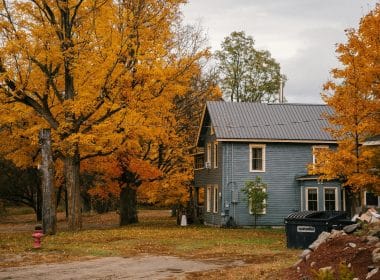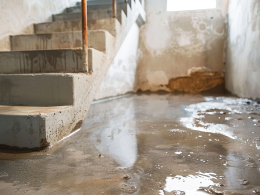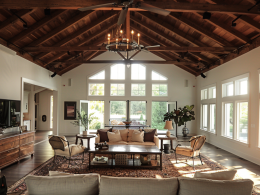One of the most impactful decisions you can make when transforming your basement into a functional and inviting space is to embrace open-ceiling ideas.
An exposed ceiling adds character and depth to your basement, allowing for creative lighting solutions and a sense of openness.
However, choosing the right color for your exposed basement ceiling can be challenging. The color you select can greatly influence your space’s atmosphere and style.
In this blog post, we will explore the factors to consider when choosing a color for your exposed basement ceiling, discuss popular color options, and share some inspiring open-ceiling ideas to help you create the basement of your dreams.
Whether you prefer a bright, airy look or a cozy, intimate ambiance, we’ve got you covered.
Factors to Consider When Choosing a Color
Before exploring specific color options for your exposed basement ceiling, consider key factors that will guide your decision-making process.
- First and foremost, assess the lighting conditions in your basement. If your space receives ample natural light, you may have more flexibility in choosing lighter or darker colors. However, if your basement relies primarily on artificial lighting, opt for colors that effectively enhance brightness and reflect light.
- Take into account your basement’s existing color scheme and decor. To create a cohesive look, your ceiling color should complement and harmonize with the walls, flooring, and furnishings. Consider the overall style you want to achieve, whether modern, rustic, industrial, or something in between.
- Consider the ambiance and mood you want to create in your basement. Do you envision a relaxing, serene atmosphere or a lively and energetic vibe? Different colors can evoke different emotions and set the tone for your space.
Lastly, don’t forget to factor in your personal preferences and style. While it’s important to consider design principles and trends, ultimately, your basement should reflect your unique taste and personality.
Popular Color Options for Exposed Basement Ceilings
1. White

White is a classic and popular choice for exposed basement ceilings. It can brighten up the space and create a clean and modern look.
White effectively reflects light, making your basement feel more spacious and airy.
It also serves as a neutral backdrop, allowing you to introduce color through other elements such as furniture, rugs, and artwork.
However, it’s important to note that white can also highlight imperfections in the ceiling, such as uneven surfaces or exposed pipes.
Regular maintenance and touch-ups may be necessary to keep the ceiling looking pristine.
2. Black
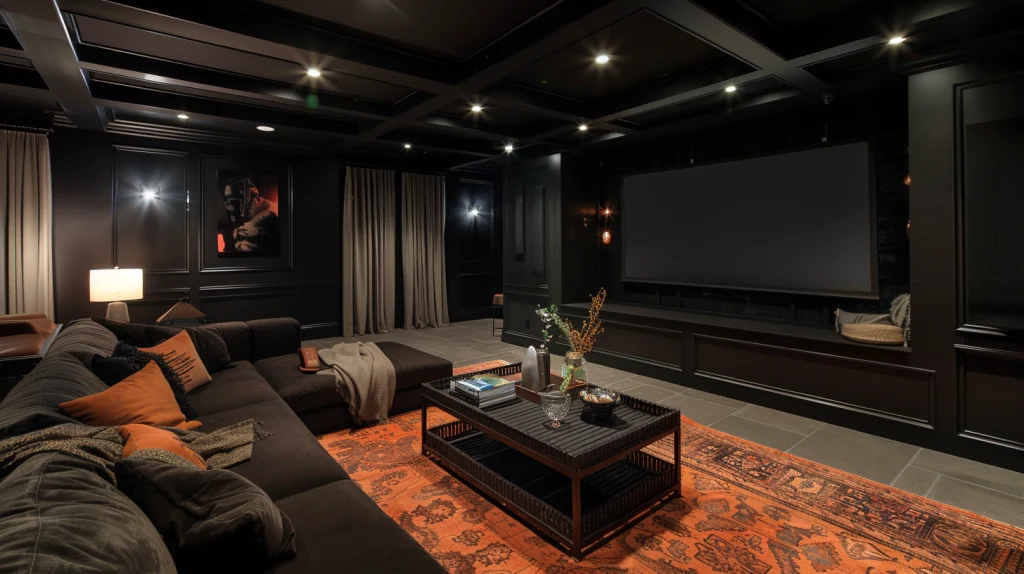
Conversely, black is another popular option for exposed basement ceilings.
Black creates a cozy and intimate atmosphere, making your basement feel like a comfortable den or home theater.
It can hide imperfections and create a sense of depth, drawing the eye upward.
When opting for a black ceiling, it’s crucial to ensure adequate lighting to prevent the space from feeling too dark or cramped.
Incorporate a mix of ambient, task, and accent lighting to create a well-lit and inviting environment.
3. Gray
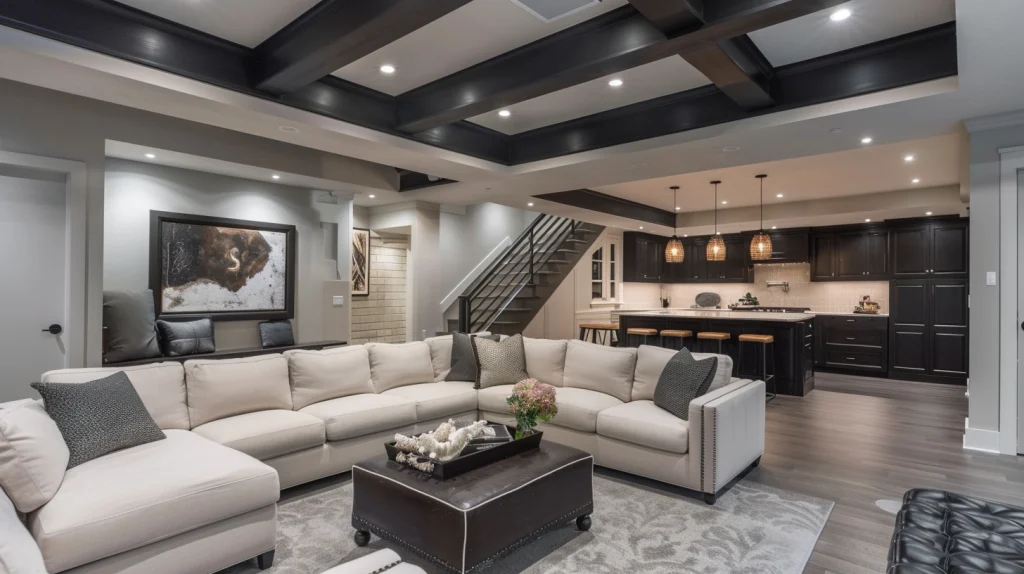
Gray is a versatile and sophisticated choice for exposed basement ceilings. It offers a neutral backdrop that complements various color schemes and design styles.
Light gray can help brighten the space and create a sense of openness, while darker shades of gray can add depth and drama.
Gray works well with a range of accent colors, allowing you to introduce pops of color through furnishings, textiles, and decor elements.
However, be mindful of the undertones in the gray you choose, as cool or warm undertones can affect the overall mood of the space.
4. Natural Wood
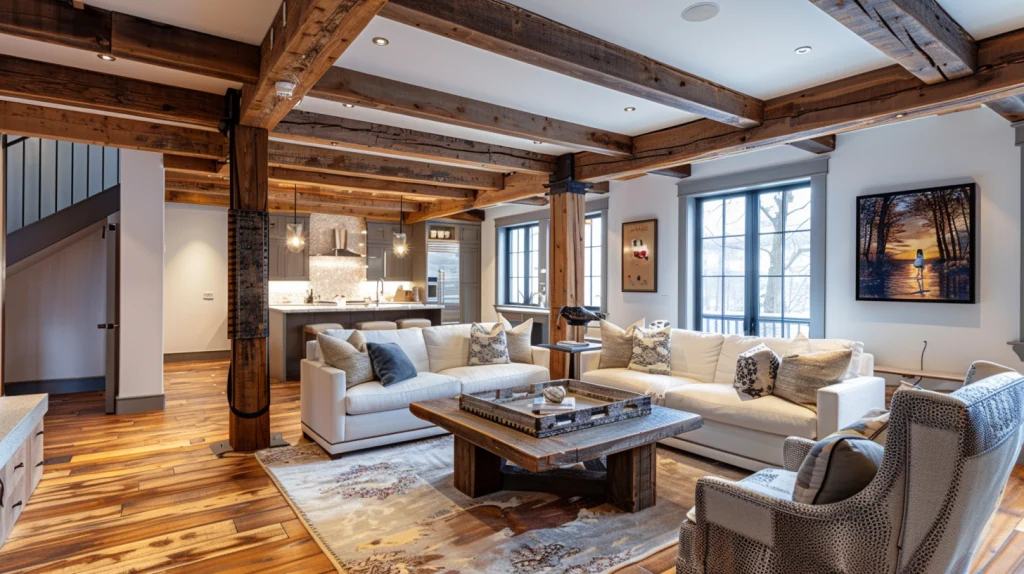
If your basement has exposed wooden beams or trusses, embracing the wood’s natural beauty can add warmth and character.
Natural wood complements various design styles, from rustic and farmhouse to industrial and modern.
To highlight the wood’s inherent qualities, consider staining or sealing it to enhance its color and grain.
Remember that natural wood may require regular maintenance to preserve its appearance and protect it from moisture and humidity.
Creative Open Ceiling Ideas
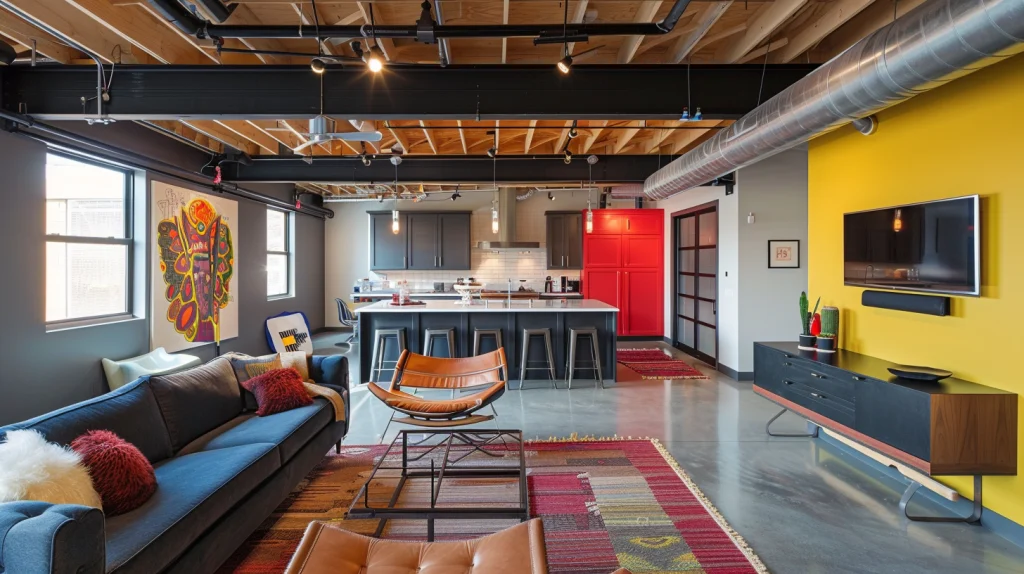
In addition to choosing the right color for your exposed basement ceiling, you can explore several creative open-ceiling ideas to add visual interest and personality to your space.
One option is to use accent colors for exposed ductwork or pipes. Painting these elements in a contrasting color, such as a bold red or yellow, can create an eye-catching focal point and add an industrial touch to your basement.
Another idea is to incorporate patterns or textures into your exposed ceiling. Consider using stencils or decals to create a unique design or pattern on the ceiling surface. To add depth and character, you can also explore different textures, such as exposed brick or corrugated metal.
Consider combining colors on your exposed ceiling for a more dynamic look. Painting the beams or trusses a different color than the rest of the ceiling can create a two-tone effect, helping define the space and adding visual interest.
Lastly, don’t forget to integrate exposed beams or trusses into your overall basement design. These structural elements can be showcased as architectural features, adding a sense of history and charm to your space.
Tips for Painting an Exposed Basement Ceiling
Proper preparation and techniques are key to achieving a professional, long-lasting result when painting an exposed basement ceiling.
- Start by thoroughly cleaning the ceiling surface to remove any dust, cobwebs, or debris.
- Fill any cracks or holes with spackling compound and smooth them once dry.
- When choosing paint, choose a type and finish suitable for the material of your ceiling. For example, use moisture-resistant paint if your basement is prone to humidity.
- Apply the paint using a brush, roller, or spray gun, depending on the texture and complexity of your ceiling.
- Bring multiple thin coats for even coverage and allow adequate drying time between each coat.
Conclusion
Choosing the right color for your exposed basement ceiling is crucial in creating a functional and inviting space that reflects your style.
By considering factors such as lighting conditions, existing decor, desired ambiance, and personal preferences, you can narrow down your color options and make an informed decision.
Whether you opt for a bright and airy white, a cozy and intimate black, a versatile gray, or the warmth of natural wood, your exposed basement ceiling can become a stunning focal point in your space.
Don’t be afraid to experiment with open ceiling ideas, such as accent colors, patterns, textures, or a combination of colors, to add visual interest and personality to your basement.
With proper preparation, the right paint selection, and a few tips and techniques, you can transform your exposed basement ceiling into a beautiful and inviting feature that enhances the overall atmosphere of your space.

